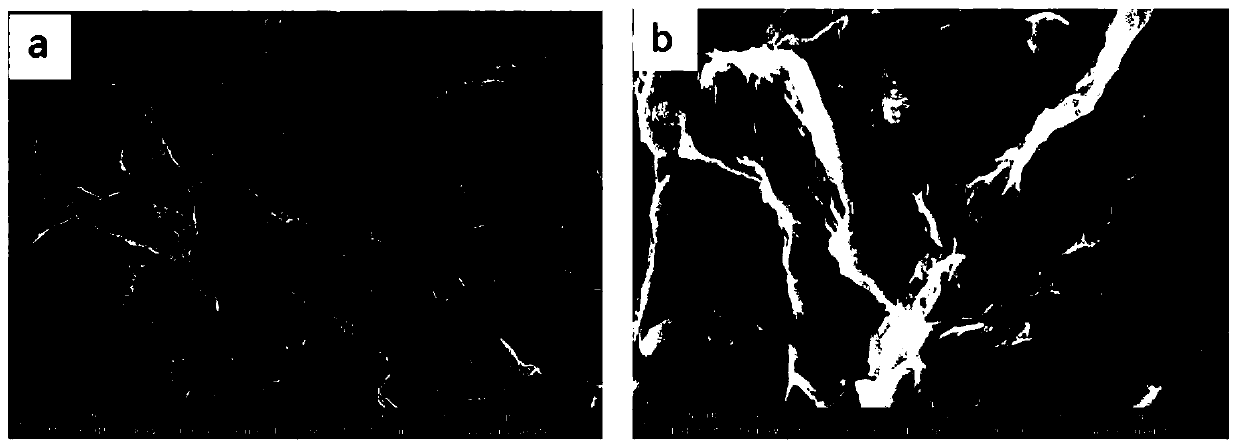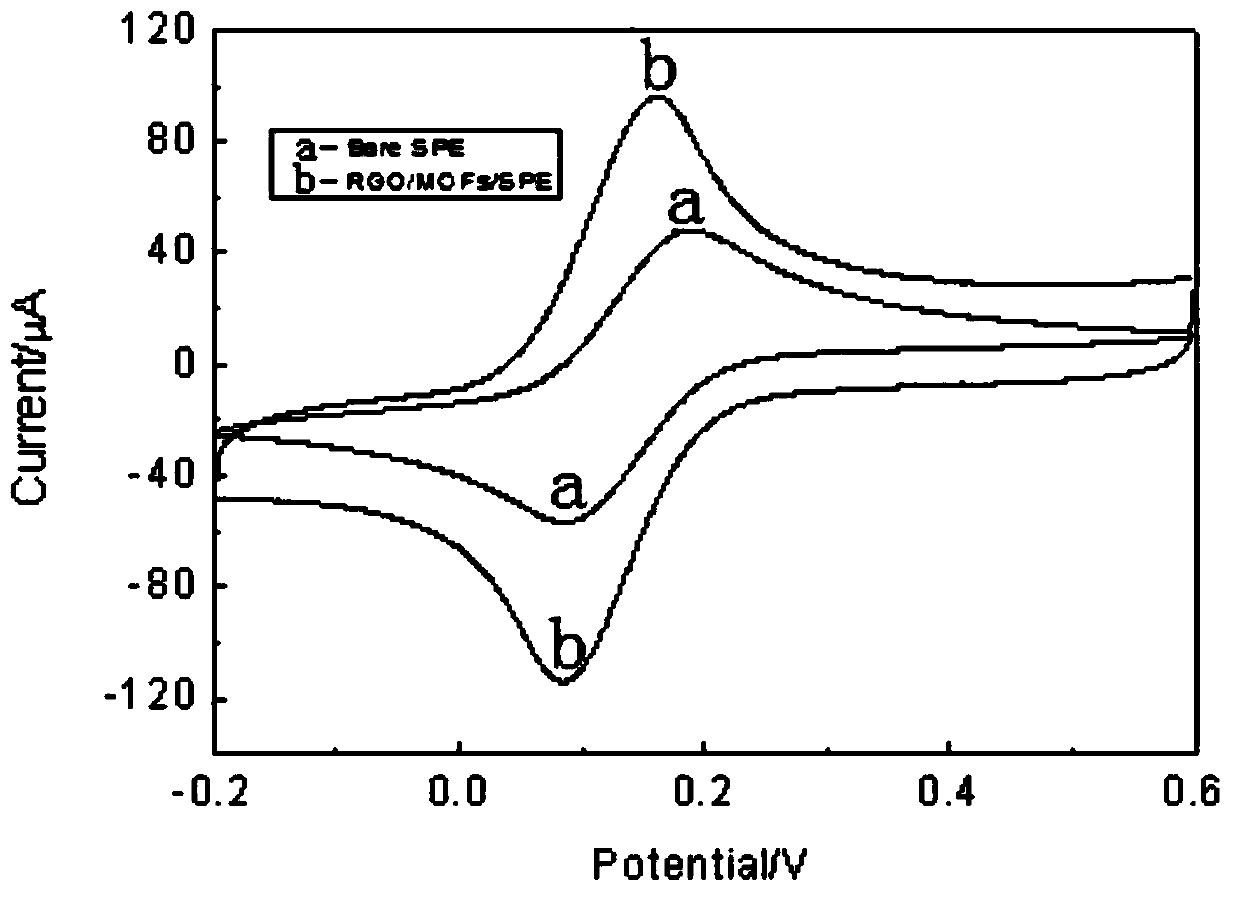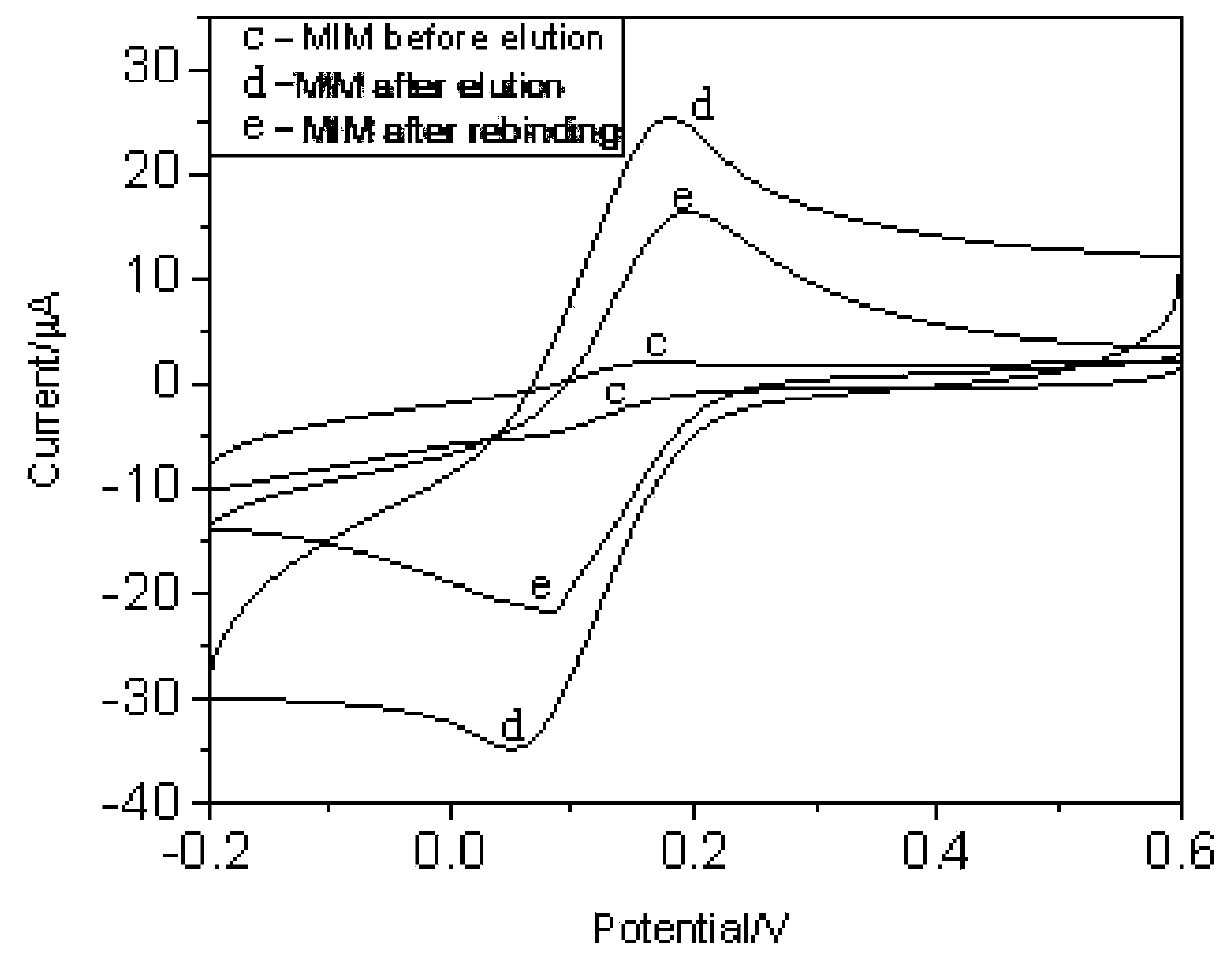Molecular imprinting electrochemical detection method for ketamine drugs
A molecular imprinting and detection method technology, applied in the field of molecular imprinting electrochemical detection of ketamine drugs, can solve the problems of inability to complete rapid on-site detection, affecting detection results, and long detection period, and achieves short detection time, high detection sensitivity, and detection. short cycle effect
- Summary
- Abstract
- Description
- Claims
- Application Information
AI Technical Summary
Problems solved by technology
Method used
Image
Examples
Embodiment 1
[0029] The method for molecularly imprinted electrochemical detection of ketamine drugs provided by the present invention includes the following steps:
[0030] 1. Preparation of high-purity graphene-loaded MOFs suspension: 1mg / ml graphene and 1mg / ml MOFs suspension were ultrasonically processed by an ultrasonic processor for 3 to 4 hours to make MOFs uniformly loaded on the graphene sheet.
[0031] 2. Preparation of graphene / MOFs modified electrode: Take 3μL of high-purity graphene-loaded MOFs suspension, drop it on the surface of the screen-printed electrode twice, and dry it naturally to obtain a graphene / MOFs modified electrode.
[0032] 3. Take 2μL of molecularly imprinted polymerization solution and apply dropwise to the graphene / MOFs modified electrode, place the UV lamp 22cm above the screen-printed electrode in a dark box, and initiate polymerization by UV for 180 minutes to obtain MIM / RGO / MOFs modification electrode.
[0033] Scanning electron microscopy experiments were per...
Embodiment 2
[0041] In order to further optimize the technical solution in Example 1, the amount of the high-purity graphene supported MOFs suspension in this example is 1.5-4 μL. When the dosage of high-purity graphene suspension is less than 3μL, the peak current will increase with the increase of dosage. After exceeding 3μL, the peak current will decrease with the increase of dosage. It is recommended to choose 3μL as the best dosage.
Embodiment 3
[0043] In order to further optimize the technical scheme in Example 1 and the polymerization conditions of the molecularly imprinted polymer membrane, in this example, ketamine was selected as the template molecule, MAA was the functional monomer and the cross-linking agent EGDMA, and the molar ratio of the three was 1:4 : 60; Methanol: 9:1 (volume ratio) of acetic acid as the eluent, eluted at a speed of 180 revolutions per second for 30 minutes, and then rinsed with deionized water several times; electrode to template molecules The adsorption time is 10min. At this time, the adsorption of ketamine on the imprinted membrane reached equilibrium. Because the incubation time continues to increase, the peak current basically no longer changes.
PUM
 Login to View More
Login to View More Abstract
Description
Claims
Application Information
 Login to View More
Login to View More - R&D Engineer
- R&D Manager
- IP Professional
- Industry Leading Data Capabilities
- Powerful AI technology
- Patent DNA Extraction
Browse by: Latest US Patents, China's latest patents, Technical Efficacy Thesaurus, Application Domain, Technology Topic, Popular Technical Reports.
© 2024 PatSnap. All rights reserved.Legal|Privacy policy|Modern Slavery Act Transparency Statement|Sitemap|About US| Contact US: help@patsnap.com










